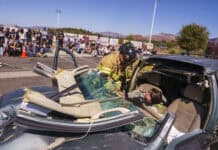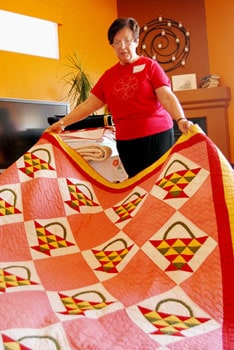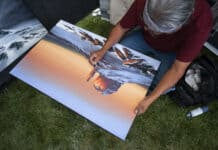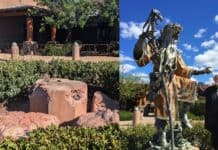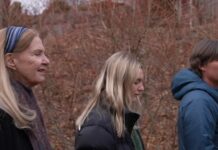Some people in Sedona collect antiques without knowing much about the history of the basket or the hat or the quilt they’ve just purchased.
Not so for the Palatki Chapter of Questers, one of four chapters comprised of residents from Sedona and the Verde Valley.
Questers was founded in 1944 by Jessie Elizabeth Bardens to further knowledge and education about antiques and to encourage the preservation, restoration and conservation of historic buildings, sites and antiquities.
Bardens’ philosophy was “The powers of the mind are memory and imagination: Without memory, we have no past; without imagination, no future.”
A good example of the research and depth of investigation by members on their chosen topic was provided by Audrey Waite who gave a presentation on antique quilts during a Questers meeting on Friday, Sept. 4, in the Village of Oak Creek.
In addition to regular members, Arizona State President Victoria Clark attended as did the founder of the Palatki and Sedona chapters, Linda Starr.
Starr was a charter member of Questers in Michigan before moving to Arizona, subsequently becoming state president in the 1990s.
To illustrate her talk, Waite brought along more than a dozen quilts, each of different eras and styles.
Waite said she got into quilt collecting accidentally when she was given three unfinished antique quilt tops.
Her interest was further piqued after discovering not all quilt stitching is equal, some of it beautifully done and other examples of it more workmanlike.
After moving to Arizona and becoming involved in the Arizona Quilt Project, she happened to see many examples in the book “Grand Endeavors,” which includes those from Ruth Jordan’s family and one made by Sedona Schnebly.
It was then she began regarding quilts as works of art.
“Once you become involved in collecting, you want to know as much as possible about the fabric, the thread and the design,” Waite said. “There are a lot of books out there to help you and it’s good to talk to dealers and experts, learning as much as you can.”
She explained that certain types and designs were made in certain time frames.
For instance, if a quilt has machine stitching, it was not made before 1846 when the sewing machine was patented.
However, by 1860, many were made using a machine.
The use of appliqués can be another clue as can be finding wool batting.
Crazy quilts — those constructed using a variety of fabrics like silk interspersed with velvet — were popular in the late 1800s.
Certain dyes also contain clues as to the date of construction.
“Collectors today should look for those in like-new condition with no disintegration of the fabric, one that’s never been washed and one with a strong visual appeal which means excellent quilting and design,” Waite said. “If it only looks good on the bed, that doesn’t count, you want something that looks good on the wall.”
In terms of value, she said that some quilts can sell for as little as a few hundred dollars and at one time, a rare treasure reached the range of $200,000.
Recently, like most collectibles, prices have fallen back.
One red and white quilt Waite showed off is called “Drunkards Path,” a pieced pattern, but done in appliqué.
Another is named “Postage Stamp,” a type that was all the rage in 1933.
Waite also brought a miniature framed quilt having 340 pieces, making other members groan at the idea of cutting out each tiny piece and sewing them all together.
Waite and fellow Quester Dee Lynn were recently inducted into the Arizona Quilter’s Hall of Fame for their efforts in providing educational opportunities to approximately 5,000 quilters from all over the world.
The pair have escorted quilters on nine cruises and host two quilt camps, one in Phoenix called Quilting in the Desert and the other in Flagstaff at Northern Arizona University called Quilt Camp in the Pines.
In addition to the research done by members, the chapter assists the Sedona Heritage Museum with funds for restoration and also with manpower and brainpower, researching requests for historical information.
Today, Questers’ spans 43 states in the U.S. and two provinces in Canada, boasting 15,000 members.
Members, states, and provinces make voluntary donations to support scholarships of $32,000 for a Master of Science Degree in Historic Preservation for two students who have been accepted at Columbia University, and a three-year fellowship of $33,500 for a Master of Science Degree in Art Conservation to a student who has been accepted at Winterthur/University of Delaware.
More information about Questers is available from Dianne Hedquist at 284-3482.
More information about quilting camps is available from Audrey Waite at 282-7311.
Susan Johnson can be reached at 282-7794, ext. 129, or e-mail sjohnson@larsonnewspapers.com




